By Stanislav Mikula1
THE ABSTRACT
The international affairs are a potentially very powerful element in the development of a national political structure, often disregarded by the political scientists. The states as movers on the international field do not form, exist and end in a vacuum. In fact, the exterior of the state does not only affect its outputs towards the other states, but also its internal relations. The less power and the potency of its own a country has, the stronger is the external influence on it. In other words, the more powerful country has a better chance of affecting the politics of its smaller neighbor country, than the opposite.
In this article, I am going to focus on the matters of how the international configurations and the political events shaped the formation, existence and the internal political battles in two different states, which were created by a single nation in the two different periods of a history. We are going to see, how the rise of a totalitarianism in the 1930ies, has contributed to the formation of the First Slovak Republic with an inherent elements of the totalitarian state. On the other hand we will be able to perceive the influence of an international democratization wave and the international democratic structures in the process of an internal struggles for democracy in the Second Slovak Republic, during the last decade of the 20th century.
THE INTRODUCTION
By comparing the first and the second Slovak Republic, we can see two historical periods of a small nation that successfully survived throughout the history. Its struggles, losses, dives and a rises, its combat against almost a physical eradication, its moral failures but also the concessions it yielded to in order to persist among a greater and a much more aggressive nations.
The following article is not yet a historical discourse, but a scientific comparison of a two contradictory political systems established by a one concrete nation, in the two completely dissimilar historical eras and an international political backgrounds.
There are a two key methods employed in this paper. A comparative method, which was first used by Plato and Aristotle – the founding fathers of comparative politics – and used by latter scientists, mainly the techniques of professor Tóth described in his work called The Comparative politics2. This method is applied in a line with the principal formula of his work: „Political power is the central interest of political comparations. It has its own structure and movers, but comparing the acceptance of an existing authorities by the population is equally important.3“ Historical examination of the scrutinized periods is the second key method, but historical facts and events referred in this text are basically mentioned for a better understanding of the distinctive political deeds, that has affected the formation of a political systems in the both examined state structures.
THE HISTORICAL BACKGROUND
The Slovaks as an ethnicity belong to the group of the Western Slavic nations with the Czechs or the Poles. The ethnogenetic roots of the Slovaks can be found in the 10th century. Until then, they were integrated into The Great Moravian Empire, together with the other Slavic tribes such as Moravians, Czechs, south Silesians, Lusatians and the others. The Slovaks used the ethnonym4 „Sloven“ to denote themselves in this era. We can start to use a new ethnonym „Slovaks“ beginning with the 10th century, because that is a time when the Slavic language unity breaks up conclusively and the new independent languages such as the Slovak, Czech and the Polish, emerge. The ethnonym „Sloven“ was alive until the 14th century, after than it has changed to „Slovak“.5
After the fall of the Great Moravian Empire, which was caused by the Magyar raids to the territory from the east and the constant pressure of the Frankish Empire from the west, Slovaks were subjugated under the rule of Magyars, who gradually occupied more and more territories. Since the official creation of the Kingdom of Hungary in 1000, the Slovaks belonged to it for a long time, until the foundation of the Czechoslovakia in 1918.
In the 1526, when Ferdinand I. the duke of Austria became a king of Bohemia and Hungary, a new personal union formed, joining hereditary domains of the House of Habsburg and the Kingdoms of Bohemia and Hungary. Czechs and Slovaks found themselves in the one state again. At this time, in the western parts of the newly-formed empire the Czechs were exposed to yoke and germanization from the Austrian German and in the eastern parts the Slovaks experienced as equal suffering from the Hungarians. „Slovaks as a minor nation had no rights and only the slightest political influence. They were compelled to the magyarization6, which lasted more than 500 years.“7
The Revolution outbreak that entangled the Europe in 1848 did not leave Austrian Empire unaffected.8 The nations of this multinational state sensed the opportunity to shake off the yoke. Apart from the fight against the feudal system and the struggle for a human rights, the question of the nationality was an issue. Beside the Hungarians, there were other nations living in the Kingdom of Hungary: the Romanians, Croatians, Slovaks, Germans, Rusyns, Serbs etc. The Hungarians alone had never reached majority in the population of the Kingdom. In the revolution year, a somewhat new element broke the surface: modern nationalism. While this has led to an advancing integration in the Italy and the Germany, in Hungary it resulted into an effort to magyarize all non-Hungarian peoples. The languages, other than Hungarian, has been consistently suppressed and the non-Hungarian schools were shut by a force. This has hit the Slovaks right after they had appreciated the revolutionary events hoping to stand beside the Hungarian revolutionaries, who opposed the backward regime of the Austrian Empire with weapons in their hands. The Slovaks and the other non-Hungarian nations of the Kingdom not only demanded overthrow of the feudal system but they also called for the emancipation of their nation. The latter request was downright rejected by the Hungarian leader Lajos Kossuth, withdrawing not only his allies against the emperor, but even driving the Slovaks and Croatians to support the Austrian emperor’s side. Although in conclusion the Hungarians were defeated during the revolution, the emperor quickly forgot about the support he gained from the Slovaks and he left them to their own destiny.
From the Austro-Hungarian compromise9 of 1867 on, in which the Hungarians acquired essentially independence from the Austrian half of the monarchy, comes total revenge from the Hungarians to the Slovaks for their support of the emperor during the revolution. The Magyarization reaches a monstrous magnitude and leaves the Slovaks with only two options: to succumb or to emigrate. “This period is marked with the numbers of Slovak families migrating mostly to the United States, where the entire Slovak enclave rises. At home, the Slovak nation was facing a physical annihilation.”10 The situation was so grave, that the European intellectuals such as Robert William Seton-Watson11, L. N. Tolstoy, Ernest Denis, and Bjørnstjerne Martinius Bjørnson – a Nobel Prize holder, openly stood up for the oppressed Slovaks, and expessed their opinion against a violent magyarization. This support deserves an acclamation as the contribution that later helped the Slovaks escape from the manacles of the Austria-Hungary. Unfortunately, this period of the most severe magyarization left such a deep traces in the historical memory of the Slovaks that it is even nowadays driving their opinions.
With the World War I. came a unique opportunity for the Slovaks and their Czech allies to escape from the subjugation. The cooperation between Czech and Slovak patriots began a long time ago, since many Slovaks were studying in Bohemia, because the Slovak schools were forbidden in the Hungarian part of Austria-Hungary (Hungarian government banned the last three Slovak grammar schools in 1874). In the Bohemia, which was a member of the western part of the empire under Austrian control, the situation was milder, because the Czech schools could co-exist alongside the German ones.
„Both peoples were lucky to be aided in their endeavors by two circumstances. The first, they had the extraordinarily competent and devoted politicians abroad: T. G. Masaryk, M. R. Štefánik and E. Beneš and the second, the overall atmosphere in an Allied Forces was such as to favor the nations in their attempts to gain independence. The Fourteen Points of the president Wilson gave these efforts final shape and a seal of an agreement.“12
The defeat of the Austria-Hungary in the World War I. together with the contribution of the Czechoslovak legions in Russia, France and Italy combined with the military efforts of the Allied Forces, allowed to form a foundation for the independent Czechoslovakia. It would be constituted by merging the historical lands of the Bohemian Crown, i.e. territories that belonged to the Austrian half of the monarchy in the past, with Slovakia, i.e. the territories in the eastern part – former Kingdom of Hungary. In case of Slovakia, borders with newly formed Republic of Hungary remained to be a problem. „Czech and Slovak politicians made no pressure on Hungary in this time, but they agreed to submit to the result of Paris Peace Conference hoping that it would be a favorable towards them. They were not disappointed. The Republic of Hungary had to surrender the territories of southern Slovakia. However, they never gave them up in their minds and they indeed tried to recapture them in 1939. Some circles have been faithful to this idea until now.“13
Following the collapse of the Austria-Hungary and of its eastern half, the Kingdom of Hungary, other subdued nations including Romanians and Croatians gained freedom.
Hungary could not swallow the fact that their new republic was going to have much smaller area of the land than the former kingdom. As early as the beginning of 1919, so-called the Hungarian Soviet Republic was formed and immediately commenced a so-called Red Terror and an invasions to the areas that were to be surrendered. This desperate attempt ended after the military intervention of the Czechoslovak legionnaires, Slovak volunteers, Romanian army and the allies. Hungary was obliged to respect its new boundaries. That, however, triggered what is known as a Trianon trauma14 in the Hungarians, which influenced the life of the surrounding nations throughout the whole 20th century. The Trianon trauma created modern Hungary, one that was a constant threat to its neighbours, creating a feeling of the injustice in the Hungarian eyes. All these things shaped the subsequent political decisions of the movers in the Central Europe.
The creation of the first Czechoslovak Republic was a rescue for Slovacs as a nation. It was a giant leap forward as opposed to their former existence in the Kingdom of Hungary. However, considering the earlier magyarization and the fact of non-existence of Slovak grammar schools and universities, there were only a few qualified Slovaks able to assume the leadership roles. The Central authorities in Prague decided to resolve this problem by assigning a Czech bureaucrats, teachers, police officers, railroad officials and public representatives into a various positins. Czech employees were encouraged to come help their Slovak brothers. If they came to Slovakia, they were granted higher wages than at, which was an incentive of its own. Many arrived for the principled reasons indeed, wating to offer assistance, but in some cases the Czech officials acted like they had just arrived to a colony and those incidents prompted dismay in some of the Slovaks.15
The idea of the Czechoslovakism, i.e. a notion of a united Czechoslovak nation, pushed by Masaryk and Beneš, represented another problem. There were too many ethnic Germans in the Czech and Moravian territories of the new Czechoslovakia, even more than Slovaks themselves. As a result, Czechoslovak politicians had to claim that Czechs and Slovaks constitute a single nation, in order to persuade the western victorious forces that the new configuration is just and balanced from the aspect of nationality. Both nations are indeed very closely tied in the term of language as no real language barrier exists between them. But from the cultural perspective, the creation of the first Czechoslovak Republic meant joining two nations at a different level of progress. Furthermore, Slovaks were much more religious than the Czechs and the Catholic Church in Slovakia had a considerable impact. This triggered new issues between both nations, since Czechs considered Catholic Church an the instrument of repression in the time of Habsburg rule.
New educated society graduated from the schools led by the Czech professors, was progressively arising in Slovakia. However, at the time when this new class was to take its place in the management of the state administration, it stroke into a barrier. All the positions were occupied by a Czech officials leaving no space for new Slovak educated class. This instigated a frustration among them which led to discontent. Slovaks were now seeking autonomy ever more and they wanted a new arrangement of the state that was strictly centralized and governed by Prague. The economic development of Slovakia that kept behind the western half of the state, remained a question and a new wave of the emigration emerged, now solely on the economic grounds. Simply put, the Slovaks were unable to earn their living at home. These and other difficulties resulted into a massive growth of the autonomy movement, but not into growing calls for a separated Slovak state. Slovaks were mostly scared of being too vulnerable, if they separated, and therefore they could become an easy target for the Hungarians. Ironically, Hitler who knew this Slovak fears of Hungarians later exploited these fears into destruction of the first Czechoslovak Republic.
THE FOUNDATION AND AN EXISTENCE OF THE SLOVAK STATE
The First Slovak Republic
Hlinka’s Slovak People’s Party (HSĽS) represented a principal political force that sought autonomy of Slovakia in the first Czechoslovak Republik. HSĽS inspired by the successes of the totalitarian states in Europe of the 1930ies slowly departed from the principles of the democracy and was increasingly converting to the authoritarian models of a state governance. HSĽS was found by a Catholic priest Andrej Hlinka. The support of a Catholicism and the autonomy were its primary political goals. Its clerical nature was strengthened by the numbers of Catholic priests in its lead.
At the time, when the first Czechoslovak Republic was betrayed by its western allies and thrown away unprotected to Hitler in Munich16, the state faced internal crisis too. HSĽS had set up a meeting of its executive committee in Žilina on 6th of October the very next day following declaration of the Munich Agreement. „The executive committee of the party undemocratically declared Slovak People’s Party the only representative of Slovakia and seized all rights to control the destiny of Slovakia.”17 HSĽS ignored other Slovak political parties and requested a central administration of the second Czechoslovak Republic.18 The pressure resulted in adopting a new law on the Slovak autonomy and the approval to set up autonomous Slovak government and Slovak Assembly.
Further territorial claims were made to the II. Czechoslovak Republic by the neighboring countries: Hungary and Poland. The Slovaks were hoping to establish a support by the Nazi Germany according to their friendly mutual relations, but they were disappointed. Germany and Italy ordered the regions of southern Slovakia to the hands of Hungary at Vienna Arbitration. Hitler had planned to take over also the rest of Czech lands, but Czechoslovakia was still formally protected by Britain and France. He found the solution in the break-up of Czechoslovakia, as that would cause the pacts on military alliance obsolete. He menaced to the Slovaks that the Vienna Awards did not put the territorial aspirations of Hungary to an end, but that he would guarantee a protection of the remaining Slovak territory even by martial means if the Slovaks declared independence.19 On the contrary, if the Slovaks remained in the II. Czechoslovak Republic, he would pay no attention to the Slovak concerns anymore as he had no interest in helping the Czechs, but only the Slovaks. Hitler invited Jozef Tiso to Berlin and presented him his demands while „informing“ him about the relocations of the Hungarian army closer to the Slovak boundaries. „Tiso denied to declare independence straight from Berlin and he asked president Hácha20 to summon (autonomous – author’s note) Slovak Assembly on 14th March. At the assembly, Tiso explained his Berlin trip and referred about Hitler’s ultimatum. Hearing this news, the Assembly by rising21 resolved on declaring independence.“22 Subsequently they passed creation of a new government that would be presided by Jozef Tiso.
The first task of the government was to ensure that Slovakia stays alive in the line with Hitler’s promises. Therefore Slovakia and Germany entered into a so-called Protection Treaty. Germany declared to defend the integrity and territory of Slovakia for the next 20 years, while the Slovak government agreed to carry out its foreign policy and defense in compliance with German instructions. Nevertheless, Hungarian invasion demonstrated that it was in fact a one-sided agreement since the Slovak appeals towards Germany to intervene were ignored. Slovakia lost more land to Hungary in a so-called Little War with Hungary. But it accepted Hungarian truce proposal due to duress by Germany.
No pluralistic democratic competition was present in the authoritarian regime of the first Slovak Republic. Instead, it was to be replaced by the corporatism where each corporate group would have its delegate in the Assembly that comprised almost exclusively members of HSĽS.
Whole existence of the first Slovak Republic was marked by clashes between the radical and moderate wings of HSĽS.23 While the radicals relied on German backing, the moderate ones bore authenticity at least in the portion of the public. This support decreased in time due to the unpopular measures the first Slovak Republic dependent on Germany was obliged to make. The Slovak nation finally turned its back on all HSĽS politicians which finally culminated into Slovak National Uprising in 1944. It was followed up by the German invasion, occupation and a retribution. In this period, HSĽS had fallen to the very bottom of the collaboration and it found an enemy in its own nation. The occupation naturally involved a full support of the radical wing by the Germans, although Jozef Tiso remained the president. This situation revealed that Germany oscillated between both wings of HSĽS only until Slovakia played their game and was sending a weapon supplies, natural resources and the food regularly. This tactic was simply more advantageous economically than the occupation of the hostile areas that required army presence. Strangely enough, after the Slovak National Uprising in 1944, Slovakia was forced to pay Germany in financial means for its own occupation.
The Second Slovak Republic.
The Velvet Revolution in 1989 brought to the Czechoslovakia collapse of the communist government that lasted form more than 40 years. New questions related to the internal organization of the new democratic state came up with the downfall of the regime. „The end of 1990 saw the peak of disputes on devolution of powers between the republics (Slovak and Czech – author’s note) and the federation. It was becoming an increasingly clear that there is a collision of two distinct concepts – Czech and Slovak – on the structure of the joint state and the further coexistence of the Slovak and Czech nation. The Czechs had inclination towards centralized federation with powerful federal authorities. The Slovaks were calling for authentic federation built from the bottom by strong national republics.“24 These differences were descending from the political elite to a general society and induced tensions among people. Though public opinion polls indicated that majority of the population prefers coexistence in a joint state, the elites finally arrived at a decision to separate the state. This was accomplished following the elections in 1992 where the Civic Democratic Party headed by Václav Klaus won in the Czech Republic and Vladimír Mečiar with his Movement for a Democratic Slovakia (HZDS) won in the Slovak Republic. Vladimír Mečiar and Václav Klaus were unable to reach agreement on common matters of the federation even after seven rounds of the negotiations. Then Declaration of Slovak National Council25 in July 1992 and Constitution of Slovak Republic on 1st September 1992 were adopted. On the November 25th, 1992 the Federal Assembly passed a constitutional act on the end of Czech and Slovak Federative Republic which gave a way for the peaceful dissolution of a joint state. As of January 1st, 1993 the map of the Europe included two new independent states: The Slovak Republic and The Czech Republic. The social and the economic instabilities were typical for this period. They were caused by a rapid, sometimes even chaotic transformation from the state governed economy to the free market economy. This caused a high unemployment rate in Slovakia. These events planted worries in the society. The large portion of the society was looking for a strong leader that would „shelter“ them. That is why many electors gave their votes in 1994’s election to Vladimír Mečiar again, who formed government with ZRS26 and SNS27. Vladimír Mečiar fully revealed his autocratic tendencies in these years. He started a system that did not appreciate principal democratic values. He began processes of a privatization of the state property in which persons close to him or to HZDS were given priority. State authorities such as the police or security agency were abused for the political purposes and a freedom of the media was under a pressure.
„Delegates of western democratic states expressed concerns about the conditions in Slovakia. The highest Slovak representatives were delivered démarches formulated concerns about political happening in Slovakia.“28 Slovakia was eliminated from the negotiations on accession to the EU and NATO. The foreign democratic politicians practically denied to lead talks with the Prime Minister Mečiar and his deputies and Slovakia found itself in isolation from the West. At home, Slovakia faced a growing problems with the corruption, authoritative methods of the Prime Minister, an economic difficulties and rise of the organized crime. The majority of the population perceived these events with a discontent. The new alternatives came with the 1998 election that ended in Mečiar’s defeat.
THE CONSTITUTION, LEGISLATURE AND THE VOTING SYSTEM
We can refer to the both states examined in this article as a Republic. The first Slovak state officially became a republic only after its constitution had been adopted onthe 21st of July 1939, coming into force on 31st of July 1939. Until then, it was a simply named as Slovak state and its internal organization was an issue of long debates by drafting the constitution. On the other side, the contemporary Slovak Republic was built as a republic from the very beginning and all the important forces came to an accord that this republic was to be based on a democratic grounds.
The difference between these constitutions is most distinctly visible if we match the preambles to the both constitutions, i.e. passages which contain the most significant thoughts of the creators, making them the foundation source of the constitutions themselves. The 1939 Constitution proclaims divine origin of power and the notion of a corporatism in its preamble. In contrast, the 1992 Constitution calls for the democratic rules, peaceful coexistence with other democratic states and a safeguard of freedom and ethnic minorities.
The drafters of the totalitarian in the first Slovak Republic’s constitution drew inspiration from the constitution of the fascist Italy, but ironically also from the constitution of the democratic Czechoslovakia. The Constitution of the first Slovak Republic comprehended a preamble and a ten parts. The Constitution of Slovak Republic of 21st July 1939 officially safeguarded the fundamental human rights and freedoms in its 10th part. However, these provisions had no real legal effect as they were easily bypassed due to a unique formulation at almost each article, which restricted the effect of each provision only to the extent that „acts of law, public order or Christian morals do not provide otherwise.“29 Incompetence and indifference of the governance unmistakeably manifested itself in the subject of a deportation of the Jewish population to lands controlled by Germany which soon became a Jewish tragedy.
The constitution of contemporary Slovakia was adopted on 1st September 1992 and its creators took mainly western constitutions as a model. It consists of a preamble and nine titles. It already came through a lot of amendments during its short existence (see further on). These changes were due to the outcome of internal struggle for democratic nature of the state.
Both the first and the second republics had their own parlaments. Both parlaments were founded in a similar fashion by changing the name of autonomous parliament to parliament of a sovereign state. This is how Diet of the Slovak Land transformed to Slovak Assembly30 on 14th March 1939 and the Slovak National Council that originally represented Slovak interests in a joint state, was converted to the National Council of the Slovak Republic on 1st October 199231. This pattern – first the parliament, then the independence – with no doubt worked well for the Slovaks.
Both parliaments were constructed in a very dissimilar manner. Formally, both the Slovak Assembly and National Council were to be selected by election, but the first and only election to the Slovak Assembly can in no way be labelled as democratic. Its appointment was intensely affected by the transformation from a democratic traditions of the first Czechoslovakia to the authoritarian system of the Slovak Republic. Although the election took place while the II. Czechoslovakia still existed, all parties, except HSĽS and parties of the ethnic minorities32, were excluded from the election. HSĽS achieved this goal by not announcing the deadline for the delivery of the slates until the deadline was over. Here, the electors got a unified list of the candidates for HSĽS and for the minorities. The voting was even made in the public at many places. Assuring the election on 18th of December 1938 could only end by the outright victory for HSĽS and it did. That is how the Diet of the Slovak Land was created that later became The Assembly of the Slovak Republic. 63 members of parliament were elected. Originally the number was set to 80, but the Vienna Award reduced Slovak territory in favor of Hungary, and that is why 17 deputies for non-existent electoral districts were missing. President Jozef Tiso later appointed the missing members directly and he maintained this routine to fill the vacant chairs throughout the whole existence of the first Slovak Republic. This was one of the reasons why the assembly cooperated with the moderate wing of HSĽS led by Jozef Tiso as opposed to the radical wing inside the party. Members of the Assembly remained in the office during an entire existence of the Republic, though originally they were elected for a 5-year tenures. This problem was solved by passing constitutional act no. 229 of 7th October 1941. The act prolonged the tenure of the Assembly members for an indefinite period until „a new assembly is elected“.33
The Contemporary voting system in the Slovak Republic fully enables free democratic competition of the political parties. There are 150 elected members of the parliament and only one electoral district, that is the entire republic. A political party needs to obtain at least 5% of the total valid votes in order to gain an access to the parliament. But even the second Slovak Republic did not fully avoid variations in the elections act that were not wholly democratic. The most blatant interference came in 1998. Vladimír Mečiar and his coalition of HZDS, ZRS and SNS passed a controversial elections act right before the election. The coalition of HZDS, ZRS and SNS colluded on a partial change of the act that would put opposition at a disadvantage. Cancellation of the electoral districts and a creation of a single precinct that would cover the whole territory of the state was aimed at the improving chances of the parties with a strong leader, but another measure discriminating electoral alliances of parties was much more questionable. The new law was apparently directed against the two existing strong opposition alliances: SDK – a coalition of a five parties and SMK consisting of a three parties. A new inside-of-coalition quorum was prescribed for the electoral alliances requiring that every subject in the alliance has at least 5% of all valid votes separately. Because of these modifications SDK had to register as a single party with unified list of candidates. The elections act amendment prohibited the campaigns in a private mass media too. By the cancellation of the electoral districts the modified law actually repressed the significance of a preferential voting. The act that was adopted immediately before the election was a subject to criticism at home and abroad, but had not been ever altered until the election. HZDS attempted to challenge the registration of SDK and demanded its disqualification from the election, but the court confirmed that registration of SDK was valid.34
Rigging the election was prevented owing to the international pressure and presence of the hundreds of OSCE observers. In spite the of massive pro government campaign in the state television and exclusion of the commercial media, the democratic forces succeeded and Vladimír Mečiar was defeated in the election. The rules on elections were later restored to a standard form thanks to a Constitutional Court’s ruling and subsequent legislative adjustment.
Both parliaments had one chamber only and the government being formally responsible to the parliament is another aspect they have in common. But in the first Slovak Republic, the legislative authority was concentrating around the government mostly by exploiting the competence to issue governmental regulations with the power of an act of law. The crux of power moved closer to president Jozef Tiso after the implementation of the the leadership principle. The competence of the parliament to remove a minister was purely formal. In the II. Slovak Republic, government is subject to parliament supervision. „When analyzed in more detail, we see that an opposite trend prevails, as if the parliament was a servant of the government, that is just a place of validation of executive decisions.“35 If the opposition seeks to dismiss a minister or prime minister by a motion of non-confidence, this attempt fails on an insufficient number of votes in the parliament. It would make no sense to expect such motion from the governing coalition. In case that one of the coalition partners voted with the opposition, the coalition would probably fall and the renegade partner’s future in the early election would be unsecure, as he might end out of the next coalition or even out of the next parliament. With a great deal of the simplification it may be concluded that the position of the modern parliament towards the government is parallel to the position of its predecessor during I. Slovak Republic, although both results were produced by political mechanisms that are unlike each other.
THE PRESIDENT
The presidents in both Slovak Republics played an important role in containing extreme currents in the society. While the president fought Nazi-oriented wing inside the very HSĽS in the first Slovak Republic, in second Slovak Republic the president had to defend democracy and try to restrain totalitarian techniques of Vladimír Mečiar. While in the first S. R., president Tiso achieved only temporary victory and in the end he himself became a negative figure in the history, in the second S.R., president Kováč managed to resist totalitarian practices of HZDS until the end of his term. And it was his sole resistance that prevented HZDS from fully overtaking the political system of the II. S. R.
The first Slovak state originally lacked the office of the presidency, but Karol Mederly, the co-author of constitution, and other lawyers insisted that a state named republic must be presided by the president.36 The president of the first republic was elected by the Slovak Assembly, but ironically, his power and authority were more solid than the authority of directly elected presidents in democratic countries.
A president whose mandate came from the citizens directly is equipped with a great competences in greater part of the world. Even though the presidents of contemporary Slovakia are also elected directly as of 1999 (previously elected by the National Council), their powers are rather limited. The direct election is a consequence of political crisis from the times of Mečiar’s rule. When the second republic was found on 1st January 1993 the office of presidency needed to be occupied. The National Council elected Michal Kováč into the office on 15th of February 1993. In 1994, Vladimír Mečiar and his HZDS won the parliamentary election. He reigned autocratically and brought the second republic into international isolation. Here a battle for the nature of the state between president on one side and prime minister and parliament on the other side began. The president’s son was kidnapped abroad in this period. When the president’s tenure ended, he had to pass his powers to the government, in other words he handed it over to Mečiar, as the parliament was unable to elect new president before the former one’s term ended.37 That is how Vladimír Mečiar accomplished cumulating the powers of the prime minister and the president in his hands. To avoid similar development in the future, the constitution was amended in 1999, implementing a direct election of the president by citizens. If we compare the Slovak 1939 – 1945 constitution with the contemporary Slovak constitution, we notice that the position and competence of both of the presidents are almost identical from the formal perspective: to represent the state on the outside, a right to declare state of mobilization, a right to declare a war and to conclude peace agreements, a right to summon the assembly (or the national council), to appoint ministers, the chief officials and judges etc. But there is a substantial difference in the actual execution of the presidential powers in the first and the second republic.
The present-day president is bound firmly by the constitution and the potential conflicts of competence between the president and the other state officials are finally adjudicated by the constitutional court. In today’s Slovakia, the crucial share of executive power actually lies in the government and the prime minister. Equivalently, the bureau of presidency was not intended to be organized as the office of a single and infallible individual in the first Slovak Republic either. But the powers held by the president Tiso grew until he attained status President–Leader, which he paradoxically achieved by implementing an ordinary act of the law about the position of HSĽS in society. Tiso essentially just used for himself the weapons that the radical wing of HSĽS headed by Vojtech Tuka normally used. Tuka, who had Hitler’s support, struck on the moderate wing of the president Tiso in 1940, during the so-called Coup of Salzburg.
The Germans were not satisfied with the past development in Slovakia. The Jewish problem had not been resolutely solved and the position of Nazi forces was very weak. As a result, Hitler had president Tiso and Slovak the government invited to Salzburg and there he dictated a composition of a new government. He had the radicals Vojtech Tuka and Alexander Mach ordered to the posts of foreign minister and minister of the interior. While Slovakia struggled to build its own political establishment38, Hitler evidently demonstrated that he wanted to build Slovakia as a national socialist state based on the German model. Salzburg clearly revealed that Slovakia was in a position of a common satellite state. The objectives of the extremist pro-Nazi wing of HSĽS began to be implemented into the politics. Yet the radical wing did not prove itself in the two following years, as it lacked sympathy among the broader population. The Germans themselves let it fall in 1942. This was performed by adopting a new, second legislative act on HSĽS. This law introduced so-called corporatism, which the radicals ironically had been seeking for a longer time. But it was the president Tiso who was the chairman of HSĽS and had been chosen as the so-called Leader, now controlling the structures of the Party and the state. As a party leader he appointed an individual functionaries of the HSĽS, which was now overlapping with the state institutions. Most of the power thus transferred to the side of the president in 1942 to 1944 up until the Slovak National Uprising when Germany once again nominated the radicals. However, that was now a real, genuine puppet government on a territory occupied by the German army.
THE GOVERNMENT
The Constitution of a present-day Slovak Republic distinctly provides in its sixth title, 108th article, that „The government of the Slovak Republic is the uppermost body of executive power“. The government had always been a collective body of executive power both in the first and the second republic. That means, that a governmental resolutions are created by voting in a plenum. The number of a government members had never been precisely specified neither in the 1939 constitution nor in the contemporary 1992 constitution. The government of the first state applied its competence not only by the means of the regulations with the effect of a statute, but also via the Government Presidium Office. The government also interfered with the judicial power through a range of the coercive methods.39 Traditional separation of the powers into a legislative, executive and the judicial one was indeed just a scrap of a paper in this era. While the government was regulated in a separate part of the 1939 constitution, the contemporary constitution lays down the position of the president and the government in one joint title called Executive power, which already brought several disputes on its interpretation.40
The Appointment of the government was a president’s responsibility in both of the republics. In the first case, the president selected the prime minister and the ministers after his own consideration, or based on the outcome of inner contests in HSĽS. The president in the contemporary state normally relies on the election results when appointing prime minister, who subsequently presents the president with the proposal of the government composition for approval. Officially the nomination of the prime minister and his government is subject to the president’s deliberation also nowadays, but in practice, the president usually takes election results as a serious reference, since the government needs formal confidence of the parliament right after its appointment. Such a procedure would be meaningless in the monolithic assembly of the first republic.
The government of the first republic belonged to the most active state organs together with the president and the assembly (and supposedly the State Council).41 While the original autonomous government only included a prime minister and five ministers, later the number of ministers reached eight.
Article 4 of Act. no. 1 on the independent Slovak State of 14th March 1939 which legally authenticated the Slovak State, was an important instrument of the government’s power. Article 4 read as follows: The government is assigned to execute by means of Regulation every task that is necessary in the transitory period for maintaining an order and defending the interests of the Slovak State.42 The government gladly exercised this authority until it was limited by the constitution that was adopted on 21st of July 1939, which directly excluded many fields of administration from its competence, while other regulations were subject to additional retrospective consent of the assembly or otherwise their legal effect was suspended. In reality, certain dualism of power president – government was exercised, but the government was on top of that at least between 1939 to 1942. By implementing the Leadership Principle the sources of power somewhat moved on the side of the president in 1942 – 1944. After this period following the German military occupation of Slovakia, the president Tiso still held his Office, but the core of the political power returned back to the government thanks to the German intervention. But this is already the period of an absolute decadence of the regime and the government in fact lost its purpose as well.
In the opposite to the first republic, the restrictions of the governmental competence are firmly obeyed in the second Slovak Republic. If a conflict with other state authority (typically the president) arises, the Constitutional Court will have a final word. The first Slovak Republic also had its Constitutional Court, but it was only a sickly child of the time which inherited its almost negligible influence from its predecessor from the first Czechoslovakia.43
THE ATYPICAL AND UNCONSTITUTIONAL POLITICAL ELEMENTS
Both states had some unusual elements in their political systems. This was the existence of Hlinka Guard and the State Council in the first republic and it is the Coalition Council in today’s republic.
Hlinka Guard was structured as a paramilitary organization of HSĽS modeled on the example of SA and SS. The force of Hlinka Guard (HG) was used particularly by the radical wing of HSĽS, but it constantly collided with unfavorable traditional state structures.
There were considerable tensions between HG and the army or the police for instance. HG was primarily operated to hunt enemies of the regime, to propagate ideas and objectives of the governance and in certain time, it also served as a security organization of the state with functions equivalent to the police. After the invasion of Slovakia with the Germans, it came under their command, fighting the rebels in Slovak National Uprising. HG ceased to exist after the overthrow of Nazism and its functionaries and members who committed war crimes were put on trial.
The State council
The State Council was a political body of the first republic that had no roots in the Czechoslovak political tradition. It was modeled on the example of the Grand Consiglio del Fascismo of Italy. Its powers were designated by the constitutional statutes from 1939 – 1940. Statutory members included: the prime minister, the president of the Slovak Assembly, six members nominated by the president of Slovak Republic, ten members selected by HSĽS and one member for each of the the Deutsche Partei and Szlovenskói Magyar Párt as registered parties representing ethnic minorities.44 Selection of candidates for the leading state offices was the primary purpose of the State Council. It also had to have partial competences from the constitutional court and from the president. Initially it was designed as a „council of elders“ or as a collective head of the state.45 Considering that most of its members were nominated by the president, the council served the moderate wing to reprove the Tuka’s wing extremists who had to explain themselves with obvious reluctance for example on the circumstances of deportations of the Jews.46
The first State Council was active until 1943, the second State Council existed in 1943 – 1945. Although the first council did not meet expectations of its creators either, the second council was in fact merely a debating club because its competences were substantially limited after employing the Leadership Principle into politics of the first republic.
The Coalition Council
The Coalition Council is a unique political body in the system of the contemporary Slovakia that is neither laid down in the constitution nor in any other law. It stepped to the forefront as of 1999 during the first government of Mikuláš Dzurinda and as a mater of fact it became the principal source of the executive power. That is a rather risky trend because the Coalition Council is subject to no control, everything is done behind closed doors and yet the ministers and MPs refer to the conclusions of the Coalition Council in their actions, claiming that they must obey them.47 The Coalition Council is normally a meeting of the top representatives of the parties participating in the government.48 They gather in the head office of one of the parties most of the time where they compromise on their following moves in the government and in the parliament. The members of parliament follow the party discipline most of the time even though the imperative mandate of parliamentary deputies is prohibited in the Slovak Republic.
THE CONCLUSION
This paper represents merely a very short introduction into the extensive subject of THE political regime in the first and THE second Slovak republics. We were able to see how the two states, having a very comparable structure of governance, built some completely dissimilar political regimes in a reality: the authoritarian and liberal-democratic one. That was as well the outcome of the international background and the pressure put on them. It is author’s wish that his work provided the reader with at least an elementary assistance to the understanding of this complex matter in light of the techniques of modern comparative politics and he hopes that more authors will further elaborate research in this matter.
THE REFERENCES
Beňko, Ján et al. Dokumenty slovenskej národnej identity a štátnosti II. Bratislava: Národné literárne centrum – Dom slovenskej literatúry, 1998
Čaplovič, Dušan et al. Dejiny Slovenska, Bratislava: Academic Electronic Press, 2000
Composite authors. Dejiny Slovenska, Bratislava: Vydavateľstvo SLOVART, spol. s r. o., 2007
Composite authors. Slovenská republika 1939 – 1945 očami mladých historikov. Trnava: Univerzita sv. Cyrila a Metoda v Trnave, 2002
Composite authors. SNP v pamäti národa, Bratislava: NVK International, 1994
Drgonec, Ján. Ústava Slovenskej republiky – Komentár, Šamorín: Heuréka, 2007
Horváth, Peter and Silvia Letavajová and Martin Piečko. Slovensko: politika a spoločnosť, Trnava: Slovenská spoločnosť pre regionálnu politiku pri Slovenskej akadémií vied v Trnave, 2003
Horváth, Peter and Martin Marčok. Slovensko: politika a spoločnosť II, Trnava: Slovenská spoločnosť pre regionálnu politiku pri Slovenskej akadémií vied, 2005
Kliment, K. Charles and Nakládal, Břetislav. Slovenská armáda 1939 – 1945, Praha: Levné knihy KMa, 2006
Lettrich, Jozef. Dejiny novodobého Slovenska, Bratislava: Archa, 1993
Lipták, Július et al. SNP v pamäti národa, Bratislava: NVK International, spol s r. o., 1994
Mederly, Karol. Ústava Slovenskej republiky a jej základné smernice, II. Edition, Bratislava: Kníhtlačiareň Andreja, 1939
Novotný, Peter in Vývoj volebných pravidiel na Slovensku 1990 -2010. Available at:
http://www.infovolby.sk/index.php?base=data/parl/2010/analyzy/1272387025.txt
(November 24, 2010)
Seton-Watson, Robert W. Racial Problems in Hungary, London: Archibald Constable & CO. LTD, 1908. Available at: http://www.archive.org/details/racialproblemsin00setouoft (November 7, 2010)
Tóth, Rastislav. Komparatívna politológia, Banská Bystrica: Univerzita Mateja Bela, 1998
1Stanislav Mikula has graduated Master degree from the Alexander Dubcek University of Trencin, majoring in Political Science. His thesis topic was Characteristics of U.S. Foreign Policy Development. He is currently an independent author on the field of International relations.
2 Tóth, Rastislav. Komparatívna politológia. Banská Bystrica: Univerzita Mateja Bela, 1998
3 Ibid., page 5
4 ethnonym – self denomination of an ethnic group
5 Lukačka, Ján in Dejiny Slovenska, Bratislava: Vydavateľstvo SLOVART, spol. s r. o., 2007, page 59
6 Magyarization is a historical term for a policy designed to coerce all non-Hungarian nations and peoples of the Kingdom of Hungary to resign on their language, nationality and culture and adopt Hungarian nationality and language.
7 Kliment, K. Charles and Břetislav Nakládal. Slovenská armáda 1939 – 1945, Praha: Levné knihy KMa, 2006, page 7
8 Austrian Empire is a designation common to the countries ruled by the Austrian line of the House of Habsburg.
9 Austrian Empire was divided into Austria and Hungary, both states having only the monarch, foreign minister , finance minister and minister of war in common. Austria-Hungary was the new name for the state. It was an aftermath of Austrian emperor’s failures in foreign affairs and his weakened position at home.
10 Kliment, K. Charles and Břetislav Nakládal. Slovenská armáda 1939 – 1945, Praha: Levné knihy KMa, 2006, page 8
11 See Seton-Watson, Robert W. Racial Problems in Hungary, London: Archibald Constable & CO. LTD, 1908. Available at: http://www.archive.org/details/racialproblemsin00setouoft
12 Kliment, K. Charles and Břetislav Nakládal. Slovenská armáda 1939 – 1945, Praha: Levné knihy KMa, 2006, page 9
13 Kliment, K. Charles and Břetislav Nakládal. Slovenská armáda 1939 – 1945,, Praha: Levné knihy KMa, 2006, page 11
14 The Treaty of Trianon was a peace agreement between the Allied Powers of the World War I. and Hungary as a successor state to Austria-Hungary. The treaty was signed at the Grand Trianon Palace, Versailles, France in 1920. Austria as the western half of the earlier empire already signed a separate peace agreement in 1919 (Treaty of Saint-German-en-Laye), but the newly formed Hungary refused to accept the loss of 72% of the former Kingdom’s land area in favor of liberated nations, until compelled to acceptance by military actions of the Allies. For the Hungarians, loss of their empire caused them a trauma that echoes in their foreign policy even today.
15 See Kliment, K. Charles and Břetislav Nakládal. Slovenská armáda 1939 – 1945, Praha: Levné knihy KMa, 2006
16 Munich Agreement was signed on 30th September 1938. Czechs and Slovaks often use phrases Munich Betrayal or Munich Dictate even today. The pact was signed by Britain, France, Germany and Italy. No representatives of Czechoslovakia were present at the negotiations. They had to wait in the lobby until they were later informed that Czechoslovakia had to waive its fortified border areas for the Germans. Later, France and Britain, formally still allies, gave Czechoslovakia an ultimatum to surrender to German requests.
17 Lettrich, Jozef. Dejiny novodobého Slovenska, Bratislava: Archa, 1993, page 77
18 Czechoslovakia was left heavily reduced after the Munich Agreement and it was challenged by further territorial aspirations of its neighbours. Czechoslovak president Beneš resigned from office.
19 Hitler never obeyed his promises. Not only did he not assist Slovaks against Hungarian invasion, but he did not even allow Slovaks to use weapons from the storage capacities of former Czechoslovak army, that were now occupied by German armies under so-called Protection Treaty.
20 Emil Hacha was a president of II. Czechoslovak Republic that had a very short duration and was reduced by Munich Agreement and Vienna Award. His approval was required for every summoning of the Slovak Assembly.
21 Voting was public and those who assented had to rise from their chairs. This was a consequence of doubts whether a secret vote would result in favor of independence.
22 Čaplovič, Dušan et al. Dejiny Slovenska, Bratislava: Academic Electronic Press, 2000
23 Moderate wing can only be regarded moderate when compared with the extremists worshipping Nazi Germany. This wing itself flourished with conservative and clerical – extreme Catholic tendencies.
24 Hlava, Bohuslav and Hlavová, Viera in Dejiny Slovenska, Bratislava: Vydavateľstvo SLOVART, spol. s r. o., 2007, page 681
25 Czech and Slovak Federative Republic had these parliaments in total: the Federal Assembly with two chambers: Chamber of the People and Chamber of the Nations. Apart from the federal assembly, each republic had its own parliament sovereign from the Federal Assembly, i.e. Slovak National Council and Czech National Council.
26 ZRS – Združenie robotníkov Slovenska (Union of the Workers of Slovakia)
27 SNS – Slovenská národná strana (Slovak National Party)
28 Hlava, Bohuslav and Hlavová, Viera in Dejiny Slovenska, Bratislava: Vydavateľstvo SLOVART, spol. s r. o., 2007, page 683
29 See Mederly, Karol. Ústava Slovenskej republiky a jej základné smernice (Constitution of the Slovak republic and its main directives), II. Edition, Bratislava: Kníhtlačiareň Andreja, 1939
30 Slovak Assembly conclusively changed its name to Assembly of the Slovak Republic only on 31st July 1939, the day when Constitution of the Slovak Republic entered into force. When referring to Slovak Assembly, we mean both the Diet of the Slovak Land and the Assembly of the Slovak Republic. Members of these parliaments were practically the same.
31 Although sovereign Slovak Republic only started to exist on 1st January 1993, its Constitution had been adopted earlier on 1st September 1992, entering into force on 1st October 1992. The last date is also the day when the name of the parliament changed from Slovak National Council to National Council of the Slovak Republic.
32 German and Hungarian minorities were allowed to have their parties throughout the I. Slovak Republic. Jewish and Czech minorities were banned.
33 See Podolec, Ondrej in Slovenská republika 1939 – 1945 očami mladých historikov. Trnava: Univerzita sv. Cyrila a Metoda v Trnave, 2002
34 Novotný, Peter in Vývoj volebných pravidiel na Slovensku 1990 -2010, available at http://www.infovolby.sk/index.php?base=data/parl/2010/analyzy/1272387025.txt
35 Horváth, Peter and Martin Marčok. Slovensko: politika a spoločnosť II, Trnava: Slovenská spoločnosť pre regionálnu politiku pri Slovenskej akadémií vied, 2005, page 8
36 See Mederly, Karol. Ústava Slovenskej republiky a jej základné smernice (Constitution of the Slovak republic and its main directives), II. Edition, Bratislava: Kníhtlačiareň Andreja, 1939
37 There were five rounds altogether, none of the successful. No party presented a candidate for the next session. There was a statutory threshold requiring that the victorious candidate for president needed 3/5 of all votes, i.e. 90 out of 150 members of the parliament needed to vote for him. But Vladimír Mečiar had no real ambition for designating anybody into the office, because he had the opportunity to gain many presidential powers as a prime minister and substitute president.
38 See Mederly, Karol. Ústava Slovenskej republiky a jej základné smernice (Constitution of the Slovak republic and its main directives), II. Edition, Bratislava: Kníhtlačiareň Andreja, 1939
39 See Korček, Ján.: Politický systém Slovenskej republiky v rokoch 1943 – 1944 published in SNP v pamäti národa (Slovak National Uprising in National memory), Bratislava: NVK International, 1994
40 See Drgonec, Ján. Ústava Slovenskej republiky – Komentár, Šamorín: Heuréka, 2007
41 See Korček, Ján.: Politický systém Slovenskej republiky v rokoch 1943 – 1944 published in SNP v pamäti národa (Slovak National Uprising in National memory), Bratislava: NVK International, 1994
42 Group of authors. Dokumenty slovenskej národnej identity a štátnosti II., Bratislava: Národné literárne centrum – Dom slovenskej literatúry,1998, page 225
43 See Podolec, Ondrej.: K niektorým prvkom prvej slovenskej ústavy a ich reálnej aplikácií v politickom živote štátu, published in Slovenská republika 1939 – 1945 očami mladých historikov. Trnava: Univerzita sv. Cyrila a Metoda v Trnave, 2002
44 See Korček, Ján.: Politický systém Slovenskej republiky v rokoch 1943 – 1944 published in SNP v pamäti národa (Slovak National Uprising in National memory), Bratislava: NVK International, 1994
45 See Podolec, Ondrej.: K niektorým prvkom prvej slovenskej ústavy a ich reálnej aplikácií v politickom živote štátu, published in Slovenská republika 1939 – 1945 očami mladých historikov. Trnava: Univerzita sv. Cyrila a Metoda v Trnave, 2002
46 See Podolec, Ondrej.: K niektorým prvkom prvej slovenskej ústavy a ich reálnej aplikácií v politickom živote štátu, published in Slovenská republika 1939 – 1945 očami mladých historikov. Trnava: Univerzita sv. Cyrila a Metoda v Trnave, 2002
47 See Horváth, Peter and Martin Marčok. Slovensko: politika a spoločnosť II, Trnava: Slovenská spoločnosť pre regionálnu politiku pri Slovenskej akadémií vied, 2005
48 The possibility of a single-party rule in contemporary Slovak political system is almost unthinkable. For it to happen, the dominant party needs more than 50% of all chairs in the National Council of the Slovak Republic, which is nearly unachievable, considering the 5% quorum for entering the parliament.

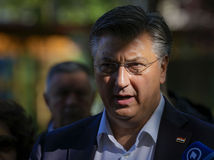
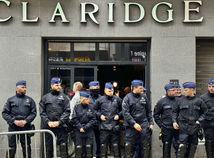



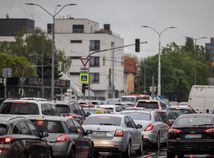










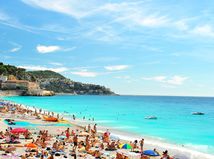
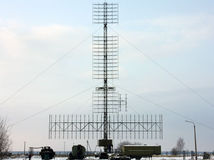



Celá debata | RSS tejto debaty